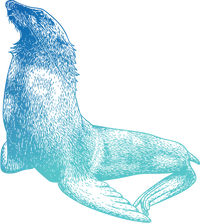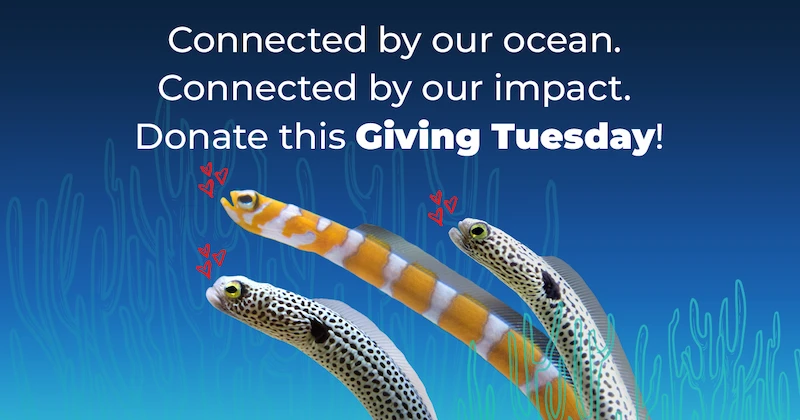Imagine you’re on a small boat in Neah Bay, located within the traditional waters of the Qʷidiččaʔa•tx̌iq (Makah) on Washington’s remote outer coast. The wind is blowing. Frigid seawater surges around you as the boat rises and falls with the waves.
Why are you here? To scuba dive up to 70 feet below the surface and find a concrete marker, only about a foot long, on a seafloor that’s teeming with life: anemones, sponges, sea stars and more.
And that’s just the beginning: That small marker is the starting point for a survey in which you’ll swim about 280 feet (100m) ahead and behind, taking video of everything in your path—including the rockfish you’re there to count—before you run out of air. When you’re done, you’ll surface, climb back into the boat, move to another site and do it all again.
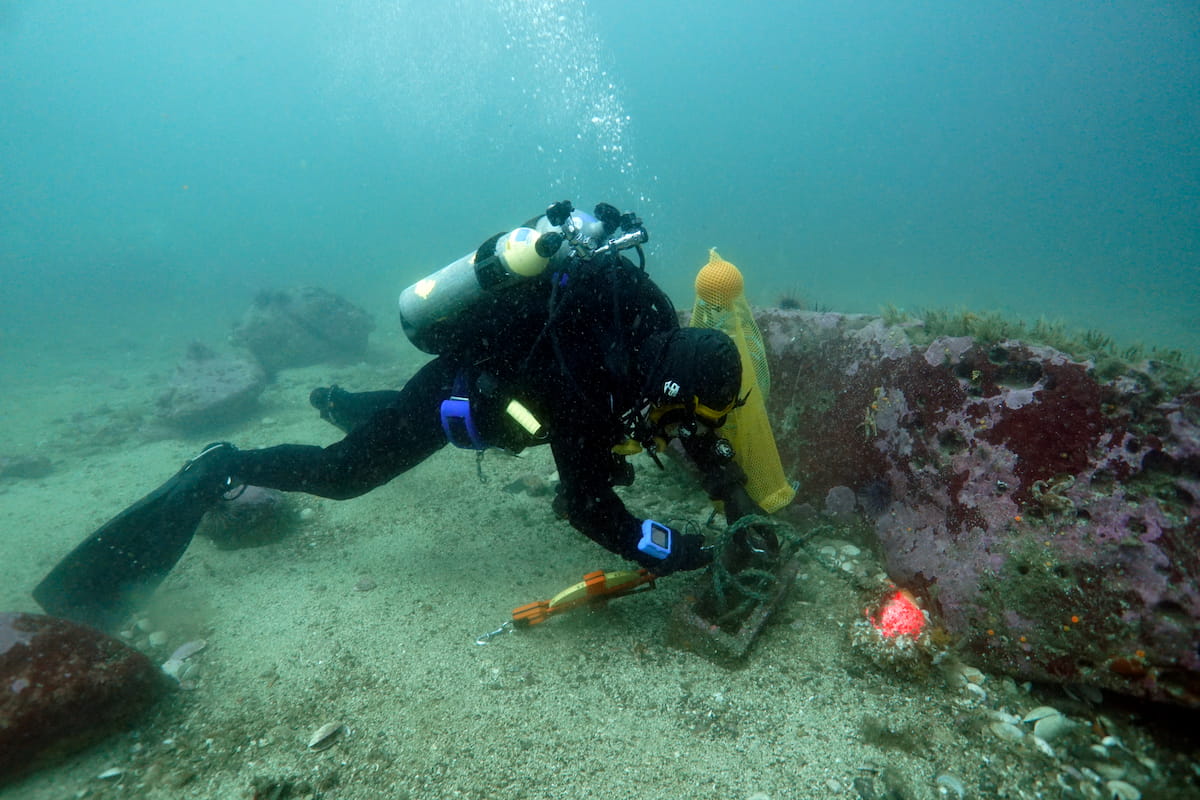
A Seattle Aquarium diver at a survey marker in Neah Bay.
Twenty years (and counting!) of rockfish research
The Seattle Aquarium launched our research study in Neah Bay in 2005—but our dive team has been sustainably collecting fish and invertebrates for the Aquarium’s habitats in those waters since the 1980s.
“It was very ‘fishy’ in the early years,” says Senior Conservation Research Manager Dr. Shawn Larson, who has been on staff at the Aquarium since 1995. “But as time went by, we noticed things were different. It seemed that we were seeing fewer rockfish but there was no way to know for sure. It was clear that population monitoring was needed.”
A memorandum of agreement with the Makah Tribe was signed, stating that the Tribe gives the Seattle Aquarium permission to conduct this research in their waters, and share the data collected to inform ecosystem management. And with that, our rockfish monitoring study was born.
Go below the surface of Neah Bay with our dive team!
Wait a minute: what’s the big deal about rockfish?
There are over 1,000 species of rockfish around the world, with 34 of them in Washington waters (and 14 at the Seattle Aquarium!). They’re important in a variety of ways, such as:
- As mid- to top-level predators, rockfish help maintain ecosystem balance by controlling populations of their prey, including shrimp, crabs and smaller fish. On the flip side, they’re an important food source for larger species like halibut, lingcod, marine mammals and seabirds.
- Because they rely on healthy prey to thrive, their health is a good indicator that their ecosystems and prey populations are healthy too.
- Rockfish do have a bit of an Achilles heel, though. For fish, they live very long lives (over 100 years for some species!). But they also have an extended generation time—meaning the number of years it takes for them to become sexually mature and produce young of their own. These long life spans and slower reproduction rates mean that every individual rockfish is an important contributor to the biodiversity of the ecosystem and that rockfish population recovery is slow.
- There’s more. Check out our rockfish webpage to learn more about these amazing fish!
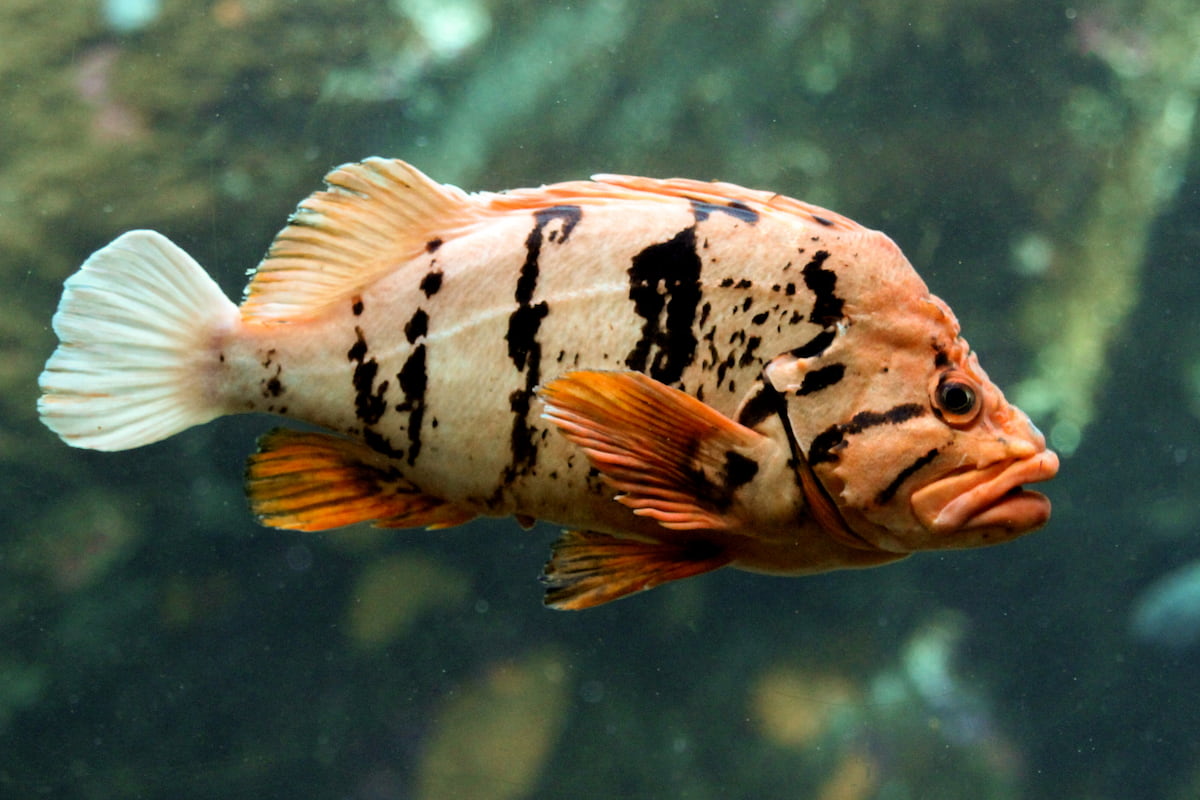
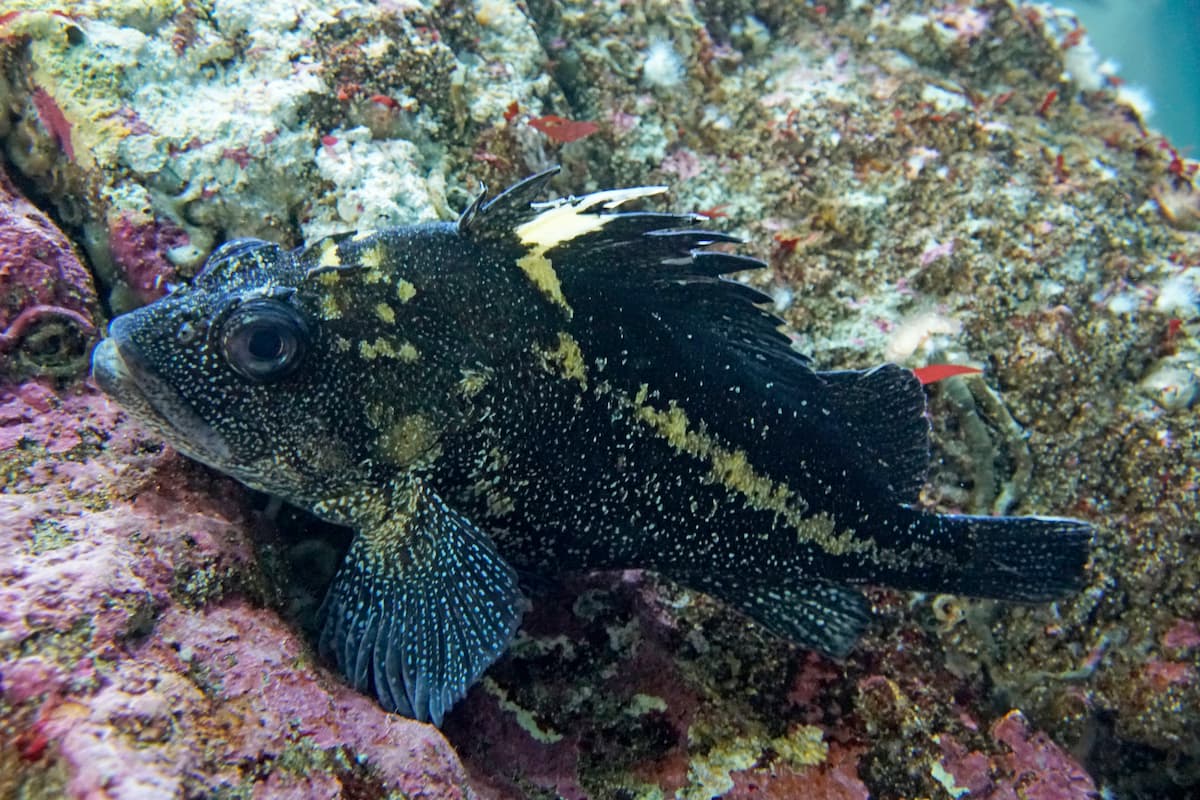
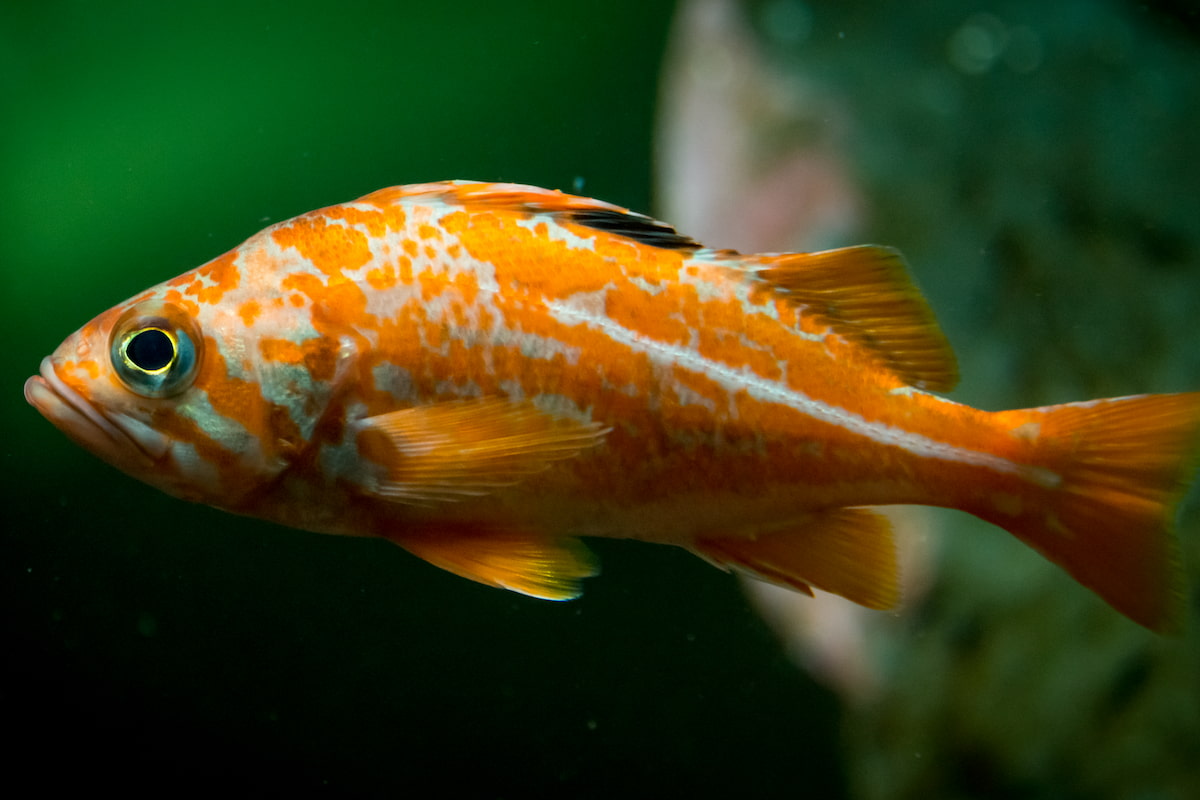
Now back to the good news
Results from this long-term research endeavor were recently published in a paper co-authored by current and former Seattle Aquarium staff members (including our own Dr. Shawn Larson), a biologist from Makah Fisheries Management, and researchers from the National Oceanic and Atmospheric Administration (NOAA).
If you’d like to take a really deep dive—including learning about the research methods and the value of using video as opposed to a more traditional slate and pencil—the paper is available to read online.
What we can share in a nutshell (or maybe a clamshell?) is that results from 19 years of research, across five different sites, revealed that the populations of rockfish in Neah Bay are stable—and even, in some species, increasing.
This is extra good news when you consider that rockfish are still legally fished (within limits) in these waters, whereas rockfish fishing in Puget Sound has been closed since 2010. “It shows that co-management of fisheries by the Makah Tribe and the state of Washington is working,” says Shawn.

A canary rockfish at one of the survey sites.
The work’s not done—for us, and you too
“The news is good but we need to continue monitoring, especially so we can track changes related to climate change,” comments Shawn. Future plans for the study include adding a component to measure water temperature and using a remotely operated vehicle (ROV) to take measurements in deeper, colder waters.
You also have a role in ensuring that the outlook for rockfish stays rosy—in Neah Bay and elsewhere. Follow regulations if you enjoy recreational fishing. Contact your legislators to urge support for legislation that protects the ocean and its inhabitants. Use public transportation, fly less and limit your use of single-use plastics. Looking for other ideas? Check out our act for the ocean webpage or ask one of our friendly interpreters on your next visit to the Aquarium!
